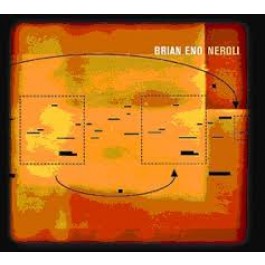“Smells are not decodable. Nor can they be inventoried, for no inventory of them can have either a beginning or an end. They ‘inform’ only about the most fundamental realities, about life and death, and they are pan of no significant dichotomies except perhaps that between life beginning and life ending. There is no pathway here other than the direct one between the receiving centre and the perimeter of its range – no pathway other than the nose and the scent themselves. Somewhere between information and the direct stimulation of a brutal response, the sense of smell had its glory days when animality still predominated over ‘culture’, rationality and education – before these factors, combined with a thoroughly cleansed space, brought about the complete atrophy of smell. One can’t help feeling, though, that to carry around an atrophied organ which still claims its due must be somewhat pathogenic.” – HENRI LEFEVBRE
Tag Archives: classifying smells
Following an artisan perfumer: “Duftspuren”
This post takes a look at artisan perfumers. It discusses the autobiographical record by Sven Pritzkoleit published in 2016. Continue reading Following an artisan perfumer: “Duftspuren”
“The future will be like perfume”
Brian Eno altered the course of both pop and experimental music. He is now 70 years old. After leaving Roxy Music in 1973, he went on to become one of the most widely extolled producers of the late 20th century. He’s also become a legendary solo artist in his own right and has lately found a home on electronic music’s iconic Warp Records. Earlier today, the American biweekly popular culture magazine Rolling Stone provided a short introduction to his oeuvre:
“Eno’s mammoth discography spans half a century of recorded music. Many people know him best as a producer and collaborator – a key force behind stone-cold classics like David Bowie’s Low and Heroes (produced by Tony Visconti and aided mightily by Eno), Talking Heads’ Fear of Music, Devo’s debut album Are We Not Men? We Are Devo!, U2’s The Joshua Tree and dozens upon dozens more. In the early Seventies, when Eno was in his early twenties, he was Roxy Music’s synthesist and sonic magician, leaving an unforgettable mark in his brief three years in the band before releasing four offbeat and hugely influential rock albums of his own, and collaborating with King Crimson’s Robert Fripp and the German group Cluster, among others. In between all of this, he put forth the modern concept of ambient music. Scores of albums and collaborations followed – encompassing the histories of rock & roll, electronic music, experimental music, soundtrack music and seemingly everything else.”
A few weeks ago the Guardian noticed en passant that Eno never stopped making interesting ambient records and discussed a recent CD set as the contemporary album of the month.
Neroli
In 1993 Eno released an ambient instrumental album called Neroli, named after the syrupy sweet, floral and heady essential oil produced from the blossom of the bitter orange tree. A click on the cover takes you to the piece on youtube:
Conceived as a single piece, Eno describes it in the liner notes as “to reward attention, but not so strict as to demand it”. Single notes resonate throughout the piece in a seemingly random but harmonic pattern that shifts quietly for close to an hour. Thanks to the calming nature of the piece,
Neroli has been implemented in some maternity wards, both to instill a sense of calm as well as enhance the organic nature of childbirth. According to the notes accompanying the CD, Eno intended to release a longer version for just that purpose.
The future will be like perfume
In 1992 Brian Eno explained some of the roots of his musical interpretation in an essay entitled:Â Â The Future Will Be Like Perfume:
Interestingly, Eno also grapples with the inconsistencies and challenges of classifying smells:
 â€Like others who’ve played with perfumes, I found this somewhat unsatisfactory. I wanted a system, a map. I briefly thought I might be able to make one myself, but this plan foundered as I jotted down the resemblance between strawberries and egg yolk, between breweries and certain types of horsehair bedding.â€
Though he does not refer to the smelly wheels. But there is reason to believe that he considered them to be unsatisfactory.
What is really worth reading about Brian Eno’s essay is how he connects the undercurrents of our time to perfumery. He uses the experience of scent to interpret key themes of age:
We find ourselves having to frequently reassess or even reconstruct them completely. We are, in short, increasingly uncentered, unmoored, lost, living day to day, engaged in and ongoing attempt to cobble together a credible, at least workable, set of values, ready to shed it and work out another when the situation demands. (…) Perhaps our sense of this, the sense of belonging to a world held together by networks of ephemeral confidences (such as philosophies and stock markets) rather than permanent certainties, predisposes us to embrace the pleasures of our most primitive and unlangued sense.
Isn’t it remarkable how one connect a clear Zeitdiagnose to a sensory experience?
[blog_subscription_form title=”” title_following=”You are already subscribed” subscribe_text=”” subscribe_logged_in=”Click to subscribe to this site” subscribe_button=”Click me!” show_subscribers_total=true]
Sources: The featured image is a screenshot from Brian Eno – Thursday Afternoon.
Cross-cultural research makes a difference
Since ancient times there has been the common belief that the experience of a smell is impossible to put into words. The New Yorker presents an overview of more recent cross-cultural research challenging this belief: Culture, not biology, rules the relation between smell and language




